7 Steps For Finding a Product-Market Fit

Keep the good stuff coming
Subscribe to our blog newsletter and get monthly content that helps you manage product data smarter.
No spam. Just real value.
To find a product-market fit, you must identify the common factors between your product, the price point, and the market. It can be challenging to find a product-market fit in a flooded online market, so how would you approach finding out if there’s a market fit for your product?
During the product-market fit stage, continue growing your existing customers and uncover other ways to deliver value to your customers. When you have a product-market fit, you have a clear-cut pathway to profitability. How can you find this first step in your startup journey?
A product-market fit isn’t something you can track or test yourself.
It’s something you need a sales force, experience, and market validation to become familiar with. So, in saying that, we've compiled a guide to finding an ideal product-market fit.
What is a product strategy?
When you begin your product-market fit research, you must decide on the goals of your product. You’ll need to find the ultimate form of fulfillment for your product. Will it be one product or a product suite? Do you want to get customers to upgrade to a more expensive package? Or do you want to create a product line capable of scaling your company?
When you have your product strategy in mind, think about some of your customers' hurdles in making the switch to your product and also if you should build vs buy custom solutions. Make sure you address these challenges in your product design (and if you're looking for product designers you can find them using Jooble). You may also want to identify why these obstacles exist. Addressing them helps ensure customers feel confident about your product. Using datasets, free images, or infographics can be an excellent way to support your point visually or opt to produce a written but stimulating proposal, or both. Use whatever works to activate customer interest in your product.
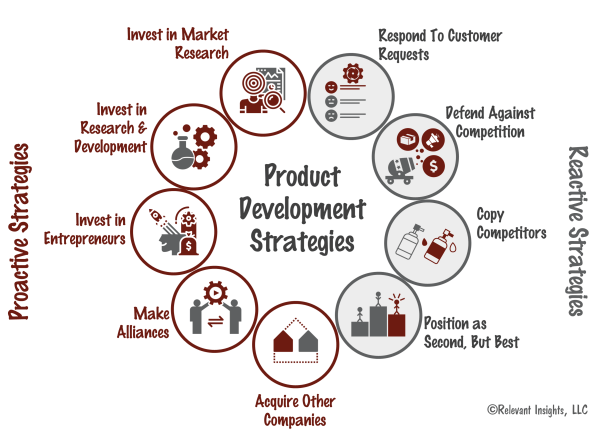
The link between product strategies and product-market fit
A product strategy helps you work out what to do with your product. It is a crucial step as it provides you with a good idea of what the market requires and offers clarity on demographics.
Once you have figured out your product strategy and product plan, it’s time to think about your product-market fit–the stage at which your ideas and consumer goals become more realistic.
So, what exactly is product-market fit?
First, examine what product-market fit is to understand the concept.
One of the most critical factors in building a successful business is the term used to define when a product or service can fill a significant need in the market, yet to be solved.
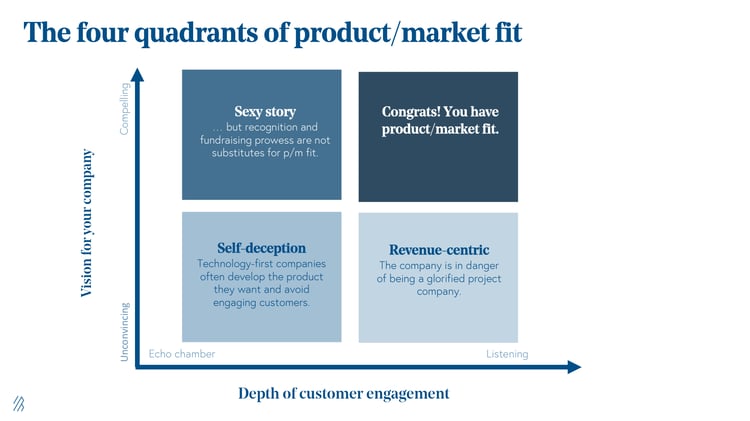
Indicators of a product-market fit
1. Solves a problem
Once you’ve discovered the problem customers face, you can begin to make a more detailed product plan. At this point, you can think about the actual development of your product as it will ensure you’re building something sustainable in the long term.
2. High user retention
If the product has high user retention levels, customers are not only buying from you; they’re returning as customers to recommend the product to their friends. This is a clear indicator that the product-market fit exists. One of the ways to find out if a product-market fit exists is to run A/B tests; test coverage evaluates which versions of the product sell better and encourage repeat customers. You’ll also want to check how your business customers are referring to their friends. Most companies have an internal referral system. Through this method, you’ll gain valuable insight into how customers navigate your site and marketing campaigns.
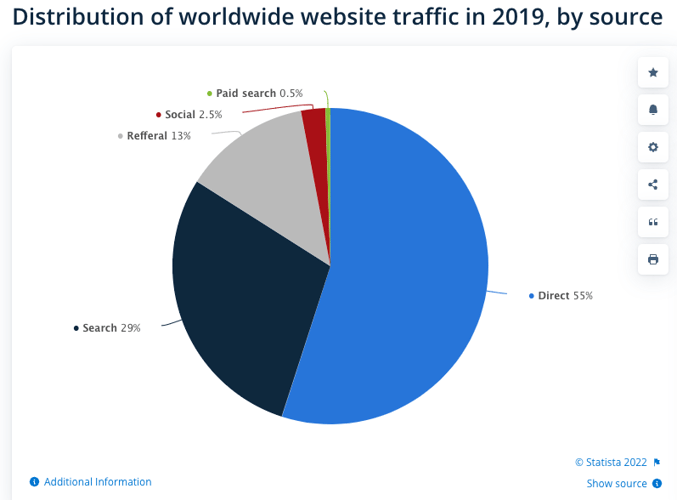
3. Organic growth
Another sign your product-market fit works is if it organically grows and boosts revenue for your business. Your product should be able to achieve these additional sales independently and without the assistance of paid ads. The organic growth your product experiences shows your business is profitable - the ultimate sign of success.
Examples of product-market fit
- Dialpad
Since the proliferation of virtual workplaces and A/B testing, Dialpad has become a prolific player in the telecommunications industry. It has grown into a one-of-a-kind, scalable, and affordable communications system simply by listening to its customers.
Using the feedback received from customers, they were able to show their investors that they were working to meet the expectations of their audience. This research enabled them to complete their objectives by identifying their audience’s needs and adjusting their product to align with them. In doing this, Dialpad has delivered a unified call center and communications platform that allows users to communicate over VoIP–enabling them to provide more functionality than a traditional phone system.
- Tripit
Tripit is another excellent example of product-market fit.
The company offers a platform that allows users to organize and transfer trips, including cars, trains, and buses. With this in mind, it was only through A/B testing that Tripit was able to show the different ways in which they can help their customers while continuously enhancing their product. Tripit has since revolutionized how customers organize and transfer their trips–allowingTripit to develop a sustainable and efficient business model.
7 significant steps to determine product-market fit
1. Identifying your target demographic
Product-market fit begins with identifying the gap in the market and, therefore, you must focus primarily on your target demographic, their consumer needs, and developing the right customer success strategy to meet them. By identifying this gap early on, you can dedicate your marketing efforts to fulfilling it.

- Understanding the customer journey
In layman's terms, the customer journey is the path a customer takes when they engage with your product, a collection of actions they take, and ultimately a question they ask. It’s your job to determine what steps a customer has and how they take them.
The customer journey is a direct reflection of your product, and you must have a clear understanding of what your product does for the customer, what the customer will get out of it, and why customers are choosing your product.
It reflects your product’s great design, how easy it is to use, whether your brand effectively performed regression testing, and the value you’re offering to prospective customers.
2. Comprehensive research
Before your launch, you must conduct extensive research to get the most out of your product-market fit. To guarantee this, you must understand the customer experience, what is happening and why, how your competitors are doing it, and how to create a product that empowers the customer, solves the customer's problems, and achieves customer success.
Understanding why a customer searches for your product, and who they are as a person will set the foundation for your product-market fit.
- Competitor research
Making a list of the competitors in your market and all the technical hurdles they might face is an excellent place to start. For instance: explore the products your competitors are selling, the price they’re charging, and the consumer base they’re targeting.
- Research on pricing
One of the most fundamental elements of a product-market fit is affordability, with a clear value to the end consumer. Do your research on the market to ensure that you don’t charge more than what you need to build the product. You could charge enough for your product to become profitable, but the price you set for your product should be fair and acceptable to your target audience.
3. Identify your USP and create a value proposition
For your marketing to work well, you need to make sure customers understand what the product is all about by constructing a compelling value proposition. But what exactly is a value proposition? Anything you can tell customers about your product will entice them to buy from you. Essentially, you want consumers to notice your product and the value it can offer them.
How to provide customer value
Understanding how your product values the customer is critical because understanding what you have to provide them and how well you have solved their problem directly reflects how successful your product will be on the market. These insights will enable you to create rich product information and assets that are specifically targeted to the needs of your audience/s.
You can’t meet the customer’s needs if they don’t know that they’re there; in other words, you can't build a product that solves a real problem if you don’t know what the problem is. Therefore, understanding what you have to offer your customers and how well you deliver value is key to getting the vital ingredients necessary for a product-market fit.
4. Make an informed hypothesis
Once you have determined the problem your product is solving, you need to create a hypothesis on what you think it'll take to solve the problem. Observe your customers. Determine which problems they’re facing. Test out your hypotheses and measure the outcomes, determining the best ways to provide solutions to issues your customers are facing.
- Using data to support your informed hypothesis
Your research gives you an idea of how your product affects your target demographic. Your hypothesis is the focus of your research and serves as a way to create more concrete steps to follow, ensuring you’re creating something that customers want (known as demand testing).
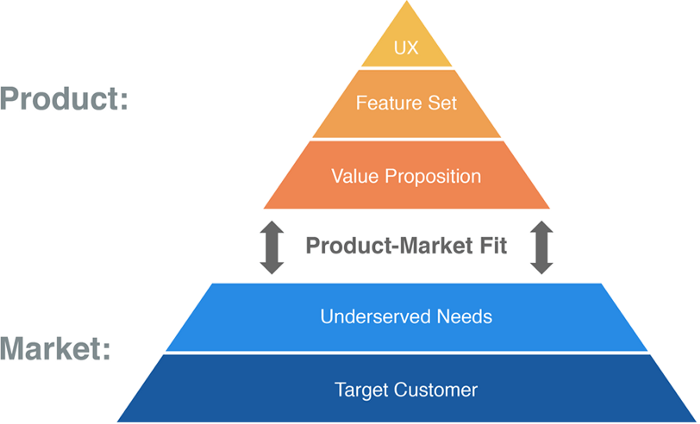
5. Measure and evaluate your product-market fit
Once you’ve been able to identify the most suitable target demographic, you can test your hypothesis with customers. You’ll need to place your goals and audience to find them easily later. Your test should include a sample size large enough–and diverse enough–to provide some level of data to help form your hypothesis.
- Monitoring customer journey
Consider implementing automated tracking tools to monitor the customer journey. By minimizing the hours spent surveying and performing manual A/B testing, you will have more time to focus on the parts of the business that need more attention.
Therefore, the data collected works to inform the areas of your brand and site that require improvement while highlighting the element generating the most interest. You can also consider time management tools and techniques to automate your business further and improve efficiency.
- Monitoring leads
It’s imperative to keep track of how many leads you have to assess whether or not you’re on the path to finding Product-Market Fit. Leads can define the number of potential customers who have signed up or expressed interest in your product.
6. Optimize your campaign using the collected data
You will have gathered enough first-party data from your customers to validate your hypothesis to create some convincing data points. Once you have tested your hypothesis, you’ll have the data to improve your product and marketing campaign.
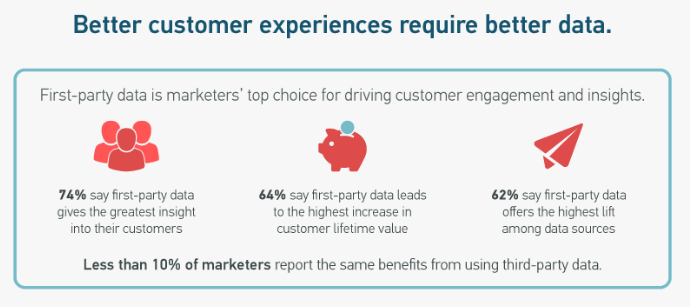
- Testing to optimize
Testing is crucial to successful product-market fit because, without it, your market may not be able to determine whether or not your product is worthwhile. Ensure you include different strategies in your testing for Product-Market Fit to capture your customers' attention and address their pain points. Remember, rigorous testing is necessary at every stage of product development, from deployment and QA to cyber security and post-release.
7. Redeploy and repeat
Once you have successfully built your product, launched it, and your target market has embraced it, you can again run the A/B test and determine if you’re still on track to achieve your product-market fit. From here, you will be able to develop the product and launch the campaign that will allow you to achieve maximum revenue. Using data analytics and ecommerce management software, you can continue to refine your product's features and functionality before preparing to launch the product to market.
Are you product-market fit?
Product-market fit is all about ensuring that you use the correct strategy to build a product that customers will purchase. Once your product has reached your product-market fit, you can test it again before submitting it for app store testing to increase your likelihood of success. What are you waiting for? Start building your product-market fit today, and watch it pay off.
_____________________________
Store your product information in Plytix, a single source of truth for all your marketing assets. This centralized dashboard enables you to monitor performance, optimize variations of content for multiple sales channels, and much more, from one place. Sign up for a free demo today!
Frequently Asked Questions
Product-market fit is like finding the perfect spot for your product where lots of customers want to buy and use it because it does exactly what they need. It's important because it means your product is likely to sell well and keep your business healthy.
You can tell your product is a good fit if people keep buying it, they tell their friends about it, and more folks are using it without you having to spend lots on advertising. You can also ask your customers what they think and watch how they use it to see if your product is hitting the mark.
Making a plan for your product is like planning a road trip; you decide where you want to end up and the stops along the way. You need to think about what your customers need, how your product will meet those needs better than others, and how it can change and grow in the future.

Matthew Cooper - Marketing Automation & Operations Manager, Global App Testing
Matthew Cooper is the Marketing Automation & Operations Manager at Global App Testing, a best-in-class web app penetration testing company that has helped top apps such as Facebook, Google, Microsoft, and Craigslist deliver high-quality software at speed all over the world. Matthew has over 14 years of experience in the I.T Networking, Software & Services Industries. He is highly skilled in Search Engine Optimization (SEO), Content Marketing, Digital Advertising, Social Media Management, WordPress, Email Marketing, Marketing Automation, CRM, and People Management. You can find him on LinkedIn. Matthew has also written content for BigCommerce and Affise.

What if your product data actually worked for you?
We’ll show you how Plytix helps you stop fixing data—and start using it.
Related posts
Keep the good stuff coming
Subscribe to our blog newsletter and get monthly content that helps you manage product data smarter.
No spam. Just real value.




Think others should see this?
Go ahead and share it.